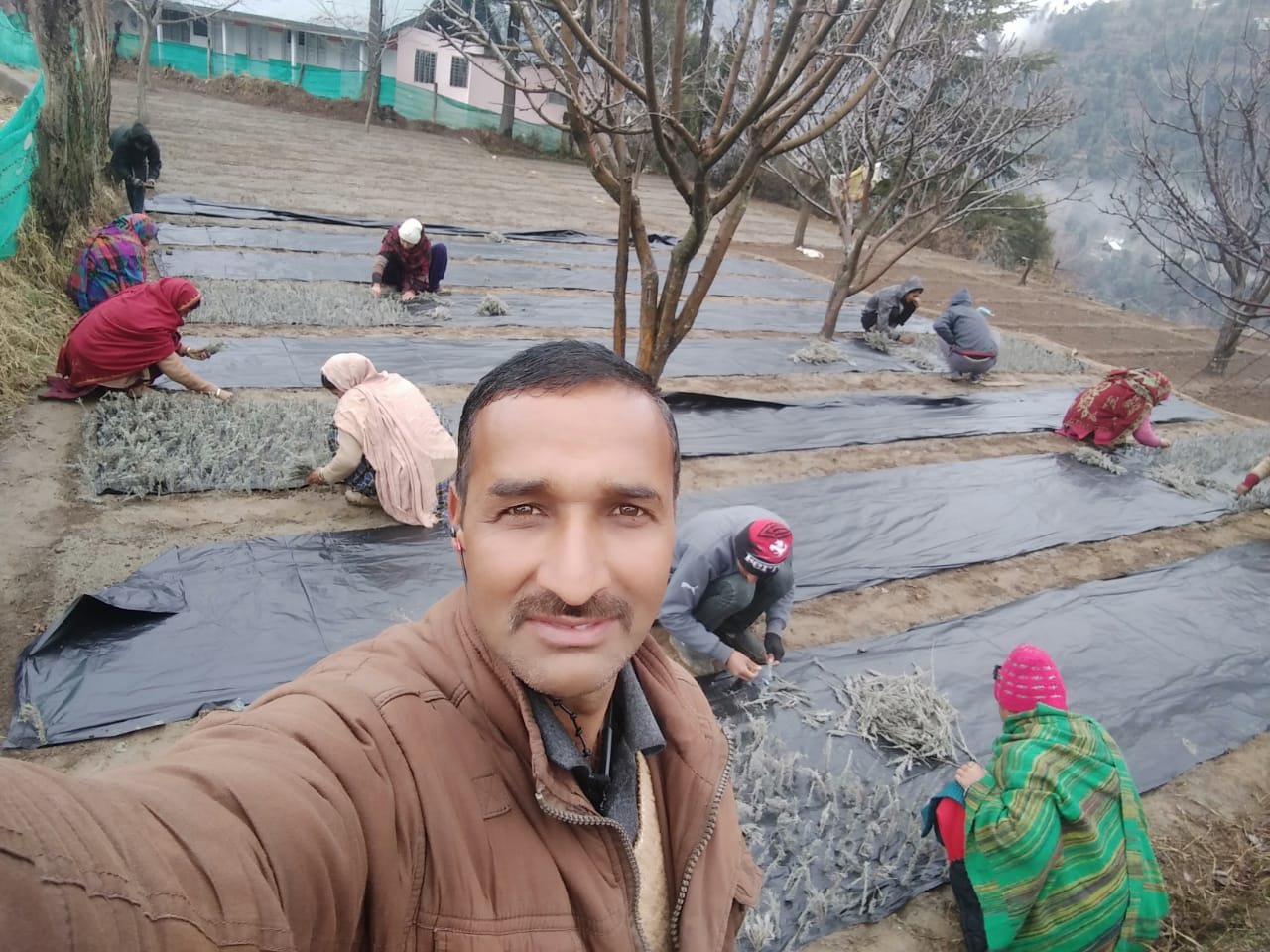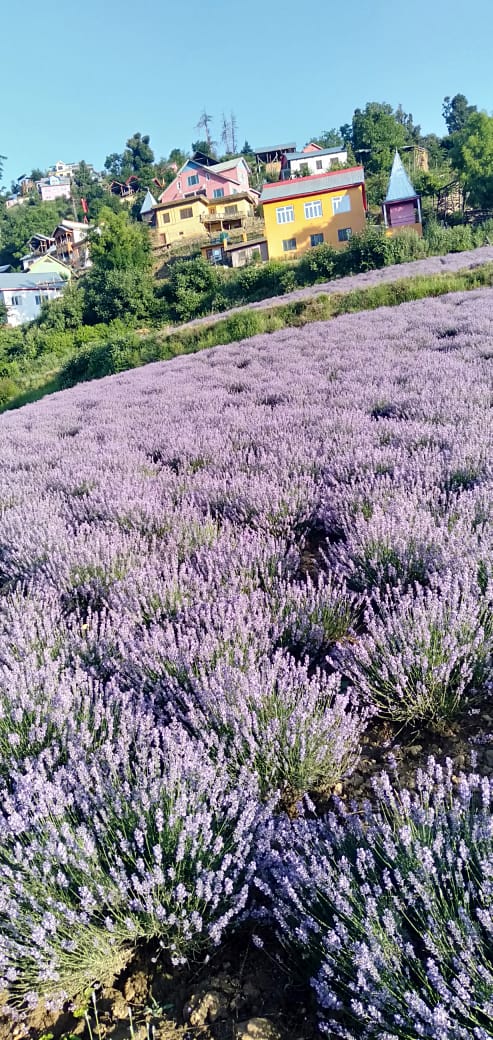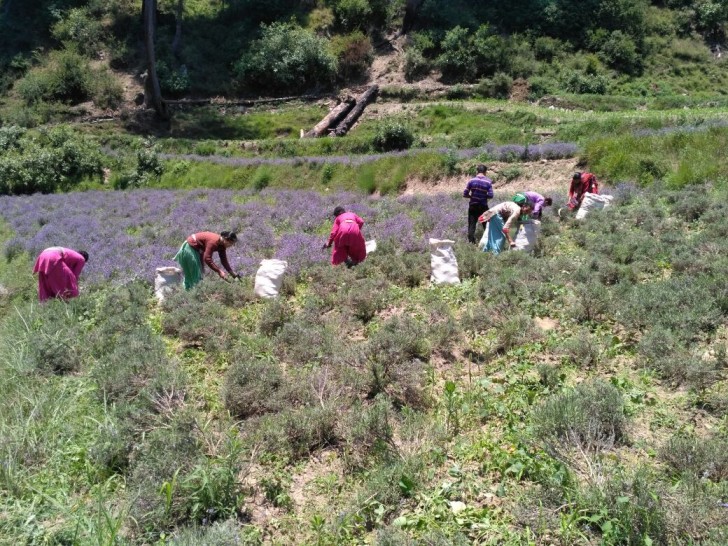Think of Jammu and Kashmir and what comes to mind are the snow-capped Himalayan mountains. But our northernmost union territory also holds the Dal lake, apple orchards, walnuts, mulberry, saffron, Chinar and Pine trees, roses and even tulips. Adding to this scenic beauty, since 2010 are the acres of lavender peeping from the hills as one drives through Doda, Kishtwar districts and Bhaderwah sub-district in J&K. The beauty of long stretches of land coloured ‘purple’ don’t fail to enamour you.

Until very recently, many knew lavender only as the soft shade to depict romance in photographs. Some can’t distinguish between the hue of purple and the lavender plant even today. For the majority, lavender is still a lighter shade of purple. What they don’t know is that lavender is a perennial shrub belonging to the mint family. Besides being an ornamental plant, it’s also an economically viable plant with a kilo of oil extracted from the flowers selling for upwards of Rs 10,000, mostly used in the aroma industry. The residue after the oil extraction is used to make agarbattis, soaps, etc.
And farmers in these regions feel as though they have struck gold. “Earlier we cultivated only maize and could hardly make Rs 2,500 per kanal [8 kanals=1 acre of land]. After cultivation of lavender, and selling the oil extracted from it, we make over Rs 15,000 per kanal every year,” says 41-years-old Bharat Bhushan, who is a pioneer of sorts in large scale cultivation of lavender in this region. Though he started the trend way back in 2010, more than 500 farmers are following in his footsteps today.

He explains that it’s very easy to cultivate this perennial crop which reaches a height of a mere 2-2.5 ft. Once you plant it, you needn’t do anything for the next 15 to 16 years except to remove dried leaves and sometimes put organic manure. Another added advantage is that this crop isn’t attacked by animals like monkeys, rodents or others. Once the plant blooms, the flower stocks are cut, and the plant is ready to grow again in the next season.
However, there are no returns in the first two years, which initially had put off many farmers from harvesting lavender. But when they started observing the profits from the third year, they realised they were sitting on a goldmine. It’s one of the best cash crops in the world where a farmer with very less input can easily earn Rs 2,50,000 to Rs 3,00,000 per hectare, or nearly 20 kanals, annually. The land holding of farmers cultivating lavender in this region ranges from 20 kanals to 600 kanals.
Colour me purple
Lavender is a native of Europe and the Mediterranean region. It was discovered around 2,500 years ago. The ancient Greeks who called it nardus or Nard used it to prepare holy essence. It gets a mention in the Bible in the ‘Song of Solomon’. The Romans used it as fragrance on their beds, in their bath water, etc. This custom continues in many regions till today. Small cotton pouches packed with dried lavender petals of the flower are kept in the pillow covers to induce good sleep. The oil of course is used in perfumery. And this is the reason why today it’s cultivated across many continents.

In India, though the plant was found in some places, it was mostly used as an ornamental plant in big public gardens or the flower stocks in the hotel industry. It was when one of the scientists from CSIR-IIIM Jammu (Council of Scientific and Industrial Research — Indian Institute of Integrative Medicine Jammu) brought few cuttings from Europe, after attending an international conference somewhere in the late 1990s, and planted them to conduct research that the real value of lavender was understood.
Dr Sumeet Gairola, senior scientist, CSIR-IIIM Jammu, explains that to get maximum profit, the plant must be from a sapling grown from the cuttings of quality lavender plants. “At IIIMJ, we distribute free QPM (quality planting material) to farmers who have land with suitable cold climates and favourable growing conditions,” explains the scientist who actively offers farmers technical help.
Though, he keeps busy with his travels to some distant lavender farming regions like Tapri, Lehrote, Killar, Koundla, Himote, Dartingal, Butla, Nalthi and a few other villages.
Bharat, who has land on Khellani top in Lehrote village, explains further, “Some of my buyers from Mumbai, Delhi and Jammu have asked us not to use chemical fertilisers as it affects the oil quality. So, if we use any, then it has to be completely chemical-free organic fertilisers only.”

The QPMs are grown in nurseries and there is a limitation to the quantity of the production. Till March 2020, IIIM Jammu had distributed QPMs of 6 lakh rooted plants amongst 500 farmers covering about 100 acres of land. They distribute only the Kashmir lavender of RRL-12 variety which is best suited to grow in the temperate region that witnesses snowfall too. And as the plant can’t tolerate excessive soil moisture, it is best suited for the slopes of this region where around 18,000 plants can be sown in a hectare.
Dr Gairole says, “As part of our Mission Aroma, our institute has also installed oil distillation machines at different places to help farmers extract lavender oil. Farmers of Bhadarwah region have produced more than 800 litres of oil, worth Rs 80 lakh from 2018-2020.”
The demand for QPMs of lavender has increased so much that Bharat, too, has started his own nursery. “I have three nurseries and one of them has multiple polyhouses. I prepare the saplings and sell them for Rs 5 each. From November to March we use these nurseries to grow the saplings and from April onwards, I grow varieties of vegetables from which I earn close to Rs 3 lakh to Rs 4 lakh a year,” he says, adding, “Besides, these nurseries also generate employment. I employ 20 women from nearby villages and pay them Rs 400 a day as wages.”

Bharat rose to prominence when the documentary filmmaker and cinematographer, Maloop Singh, from Jammu made a short documentary on lavender farmers which was also shown to Prime Minister Narendra Modi. Bharat also spoke with the Prime Minister via tele-conference when he visited the state and addressed the farmers.
Farmers of these districts who are used to the hard life of living on hills where they have to trudge nearly 4-5 kms, two to three times a day to reach the motorable roads, are very happy with their newfound crop and the changes it is bringing in the region. Though, the youth still hanker for a government job in the army, police or banks. “Lavender is making our children think of returning to farming,” Bharat says with a smile.
(Edited by Yoshita Rao)
No comments:
Post a Comment